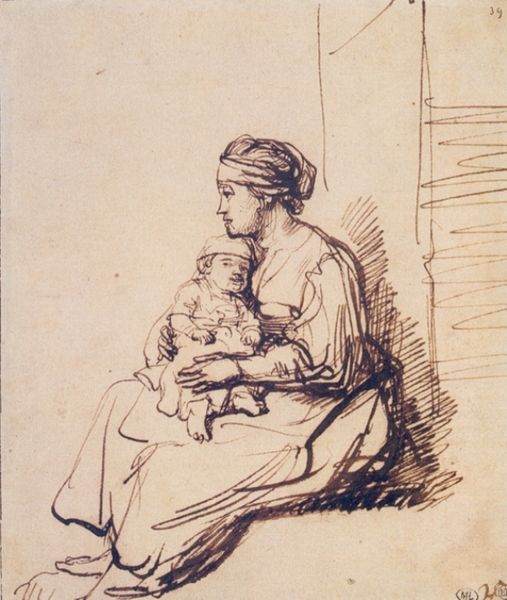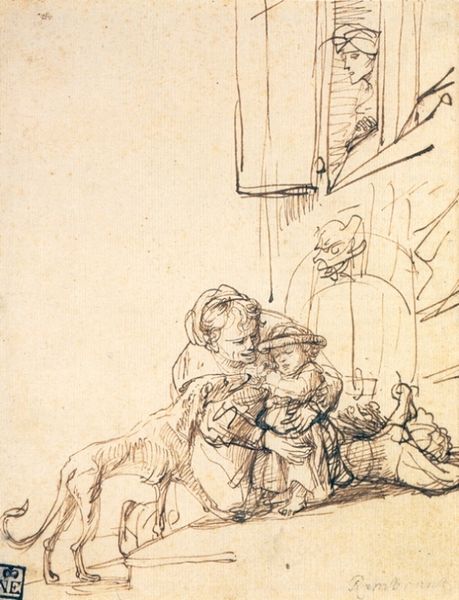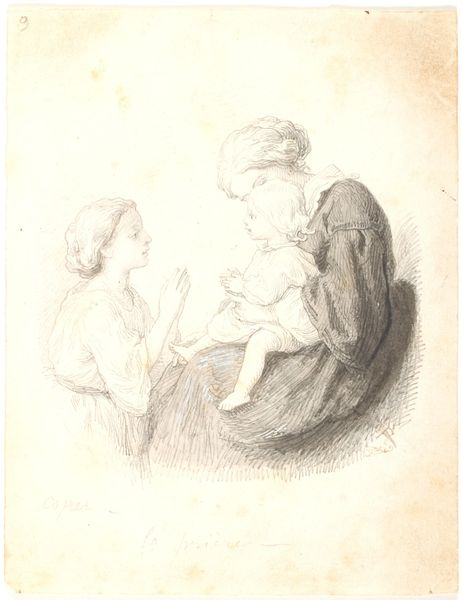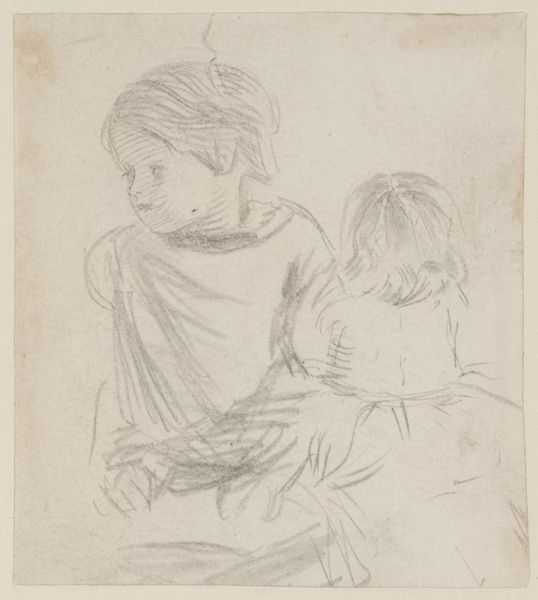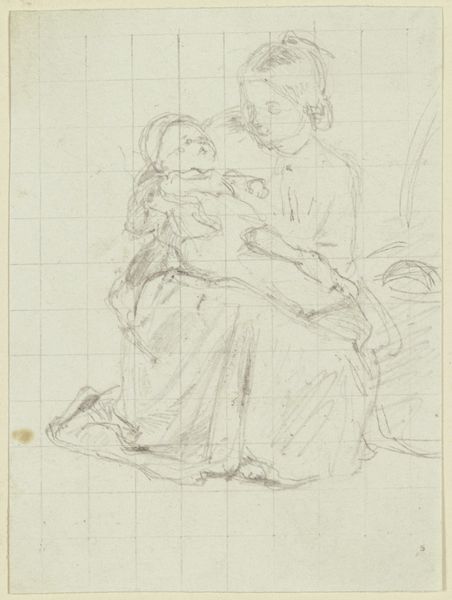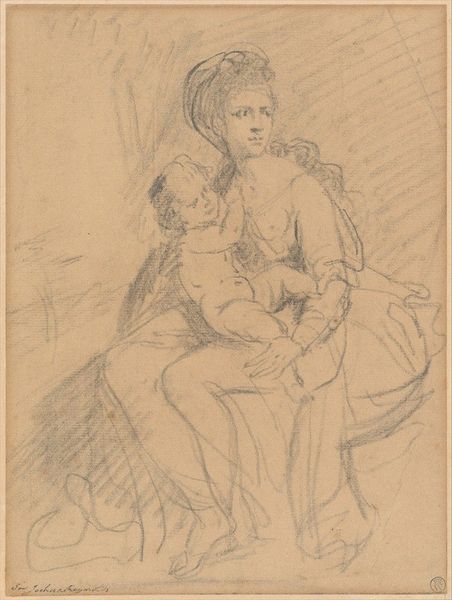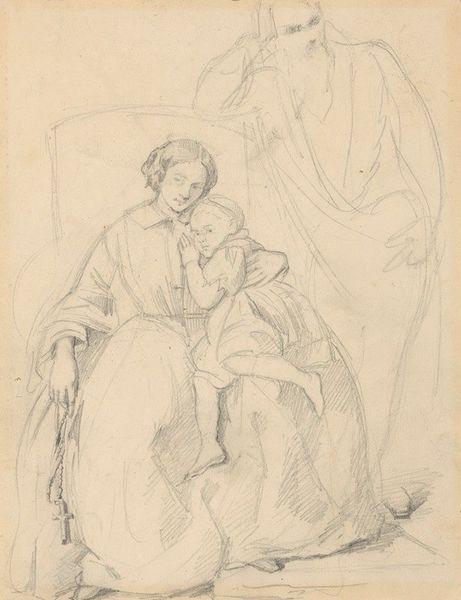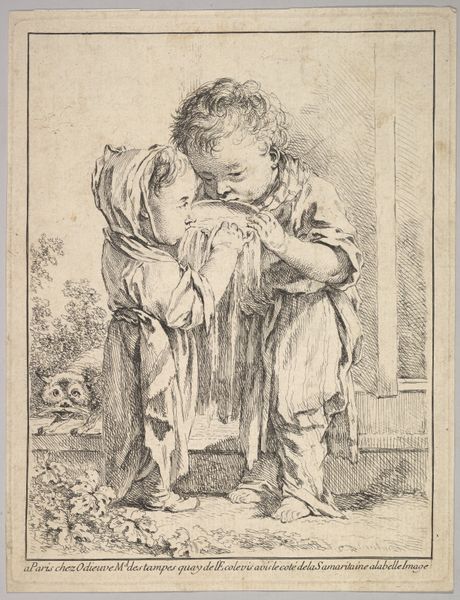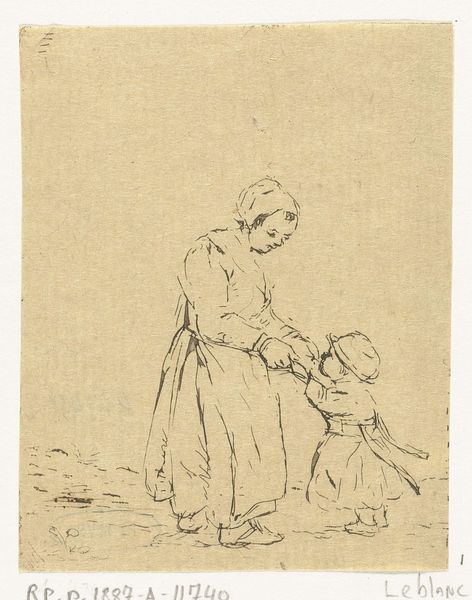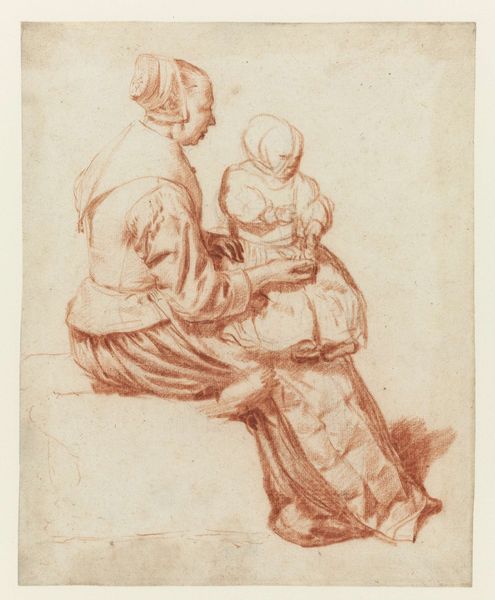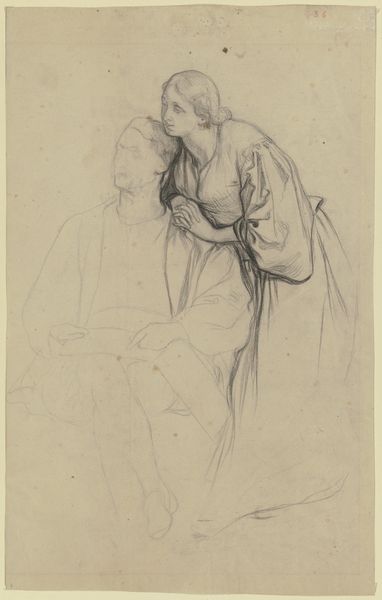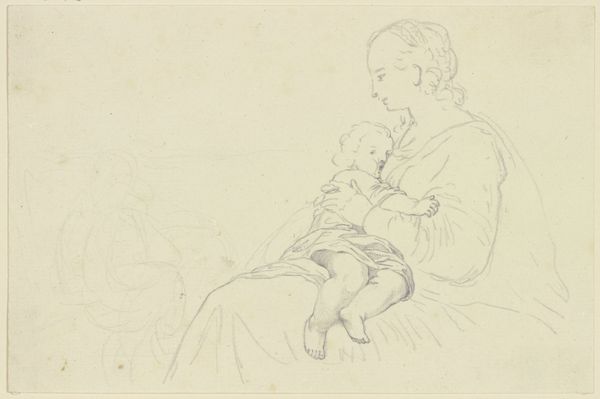
drawing, pencil
#
portrait
#
drawing
#
dutch-golden-age
#
pencil sketch
#
charcoal drawing
#
sketch
#
pencil
#
portrait drawing
#
genre-painting
#
sitting
Dimensions: 17 x 14 cm
Copyright: Public domain
Editor: This is Rembrandt van Rijn’s “A Nurse and an Eating Child,” created around 1635. It’s a pencil drawing. The sketch has a softness to it, a sense of everyday intimacy that's quite touching. What do you see in this piece, beyond the immediate domestic scene? Curator: It's a window into the 17th-century Dutch Golden Age and its attitudes toward women, children, and domesticity. This image offers a glimpse into the lived realities of those often marginalized in grand narratives. Consider the power dynamics at play. The nurse, likely a woman of lower social standing, is responsible for the child’s care. How might this seemingly simple sketch reflect the broader socio-economic structures of the time? Editor: That’s a compelling perspective. I was so focused on the tenderness; I hadn't considered the socio-economic implications. Does Rembrandt offer a critique or a reinforcement of these power dynamics, do you think? Curator: That's the crucial question. Rembrandt was known for his empathy towards those on the margins. By depicting this intimate moment with such care, is he humanizing the nurse and child, thereby challenging the rigid social hierarchies? Or is he simply documenting a social norm? What details in the composition guide your thinking? Editor: I notice how their eyes don’t meet. The nurse looks downward, towards the child. Perhaps it shows care, or maybe it shows the difference in status, subtly but perceptibly. Curator: Exactly. It’s in these subtleties that we find the most telling clues about societal expectations and unspoken rules. We can look through historical texts and studies of gender during this period to contextualize the work further. Editor: This has completely changed my view of the drawing. I initially saw a tender moment, but now I also see it as a reflection on class and social dynamics. Curator: Art offers that opportunity, that challenge. It allows us to see familiar images through a different lens, prompting us to question the structures that shape our own world.
Comments
No comments
Be the first to comment and join the conversation on the ultimate creative platform.
